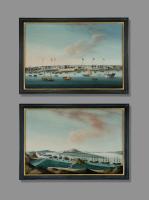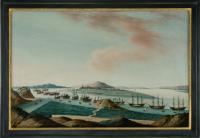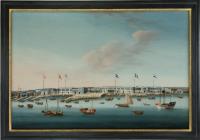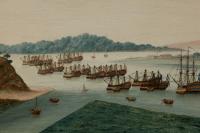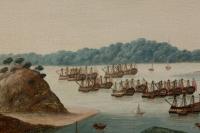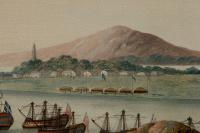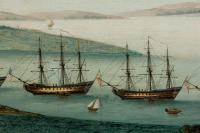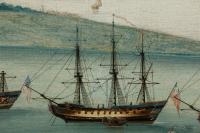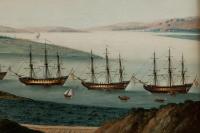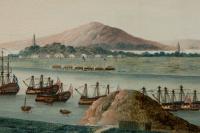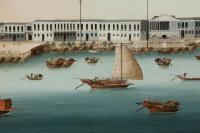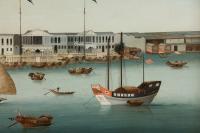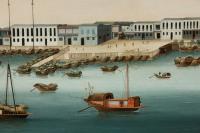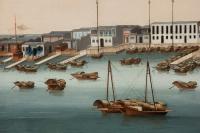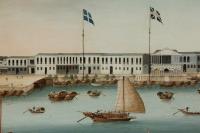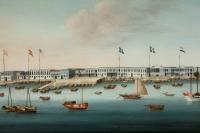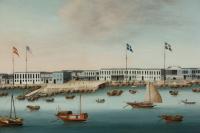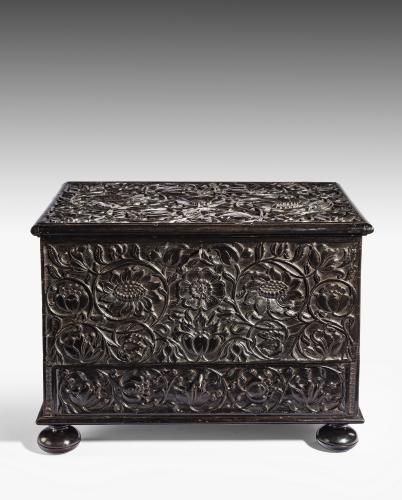
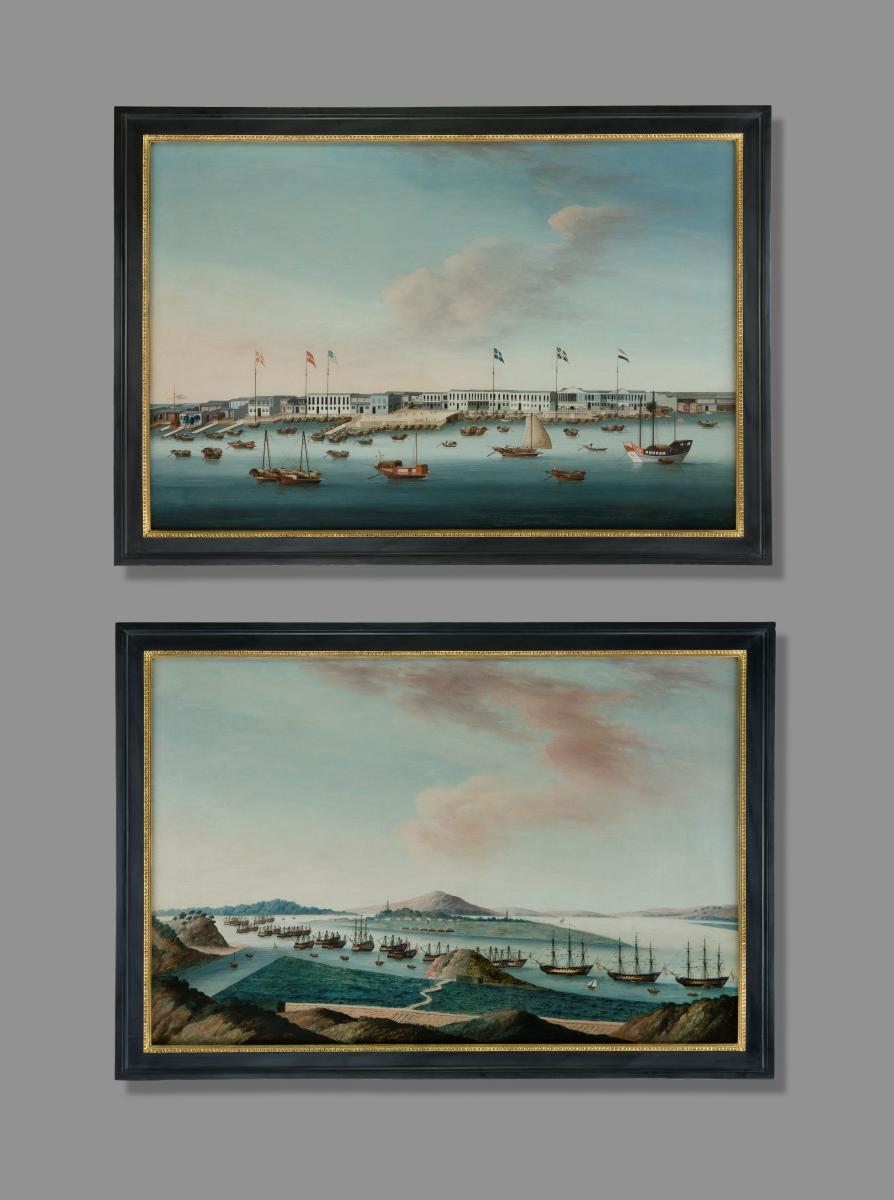
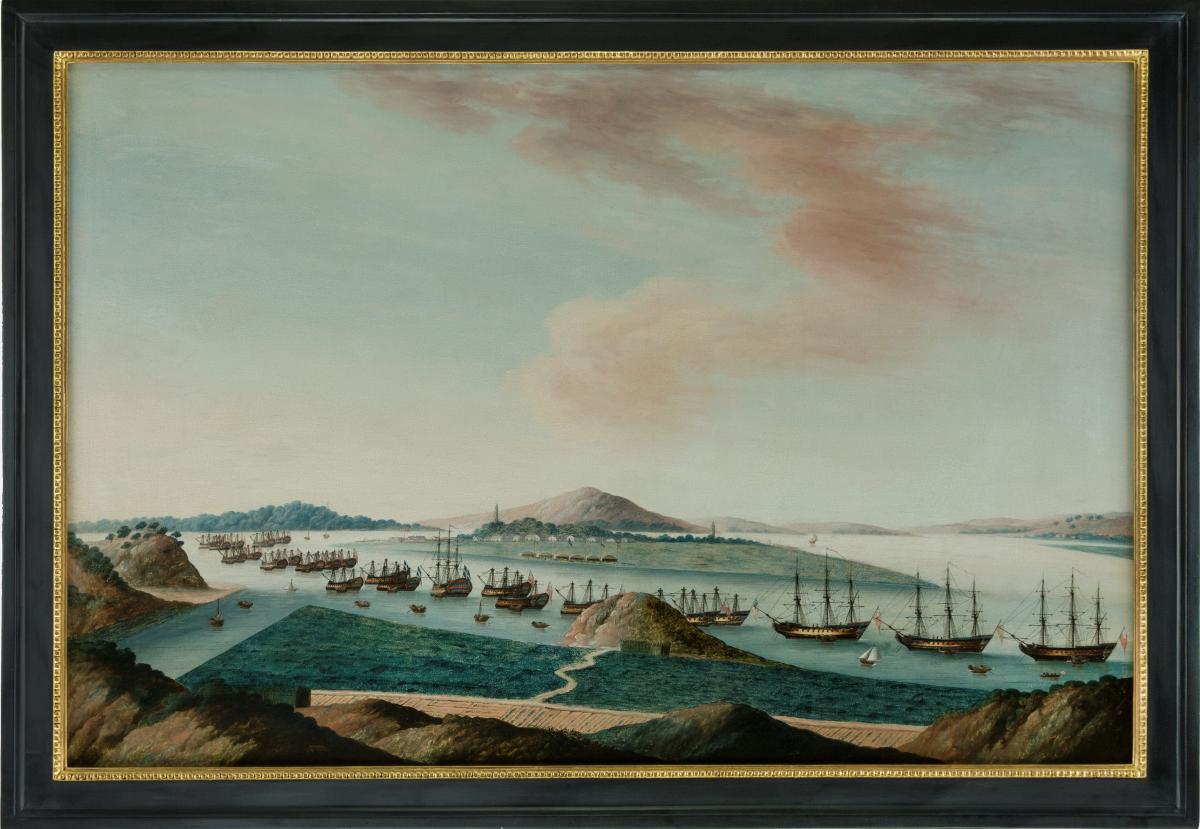
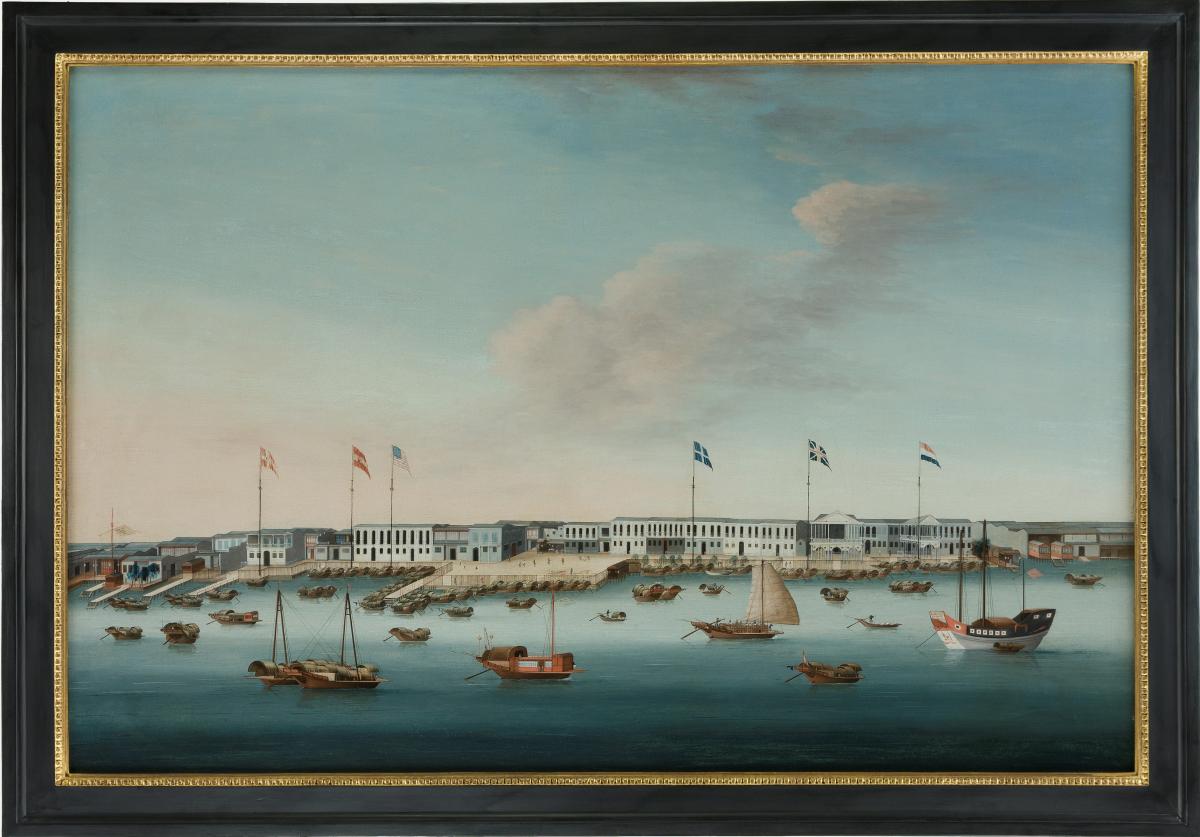
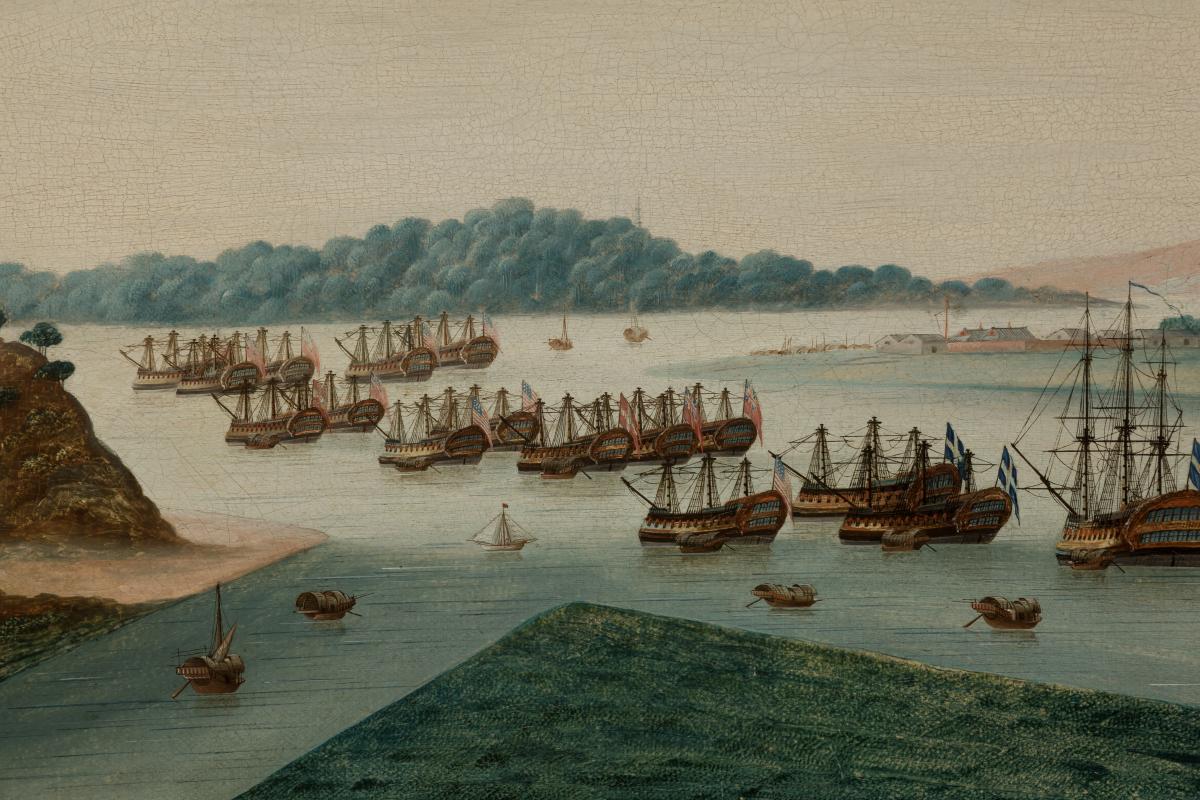
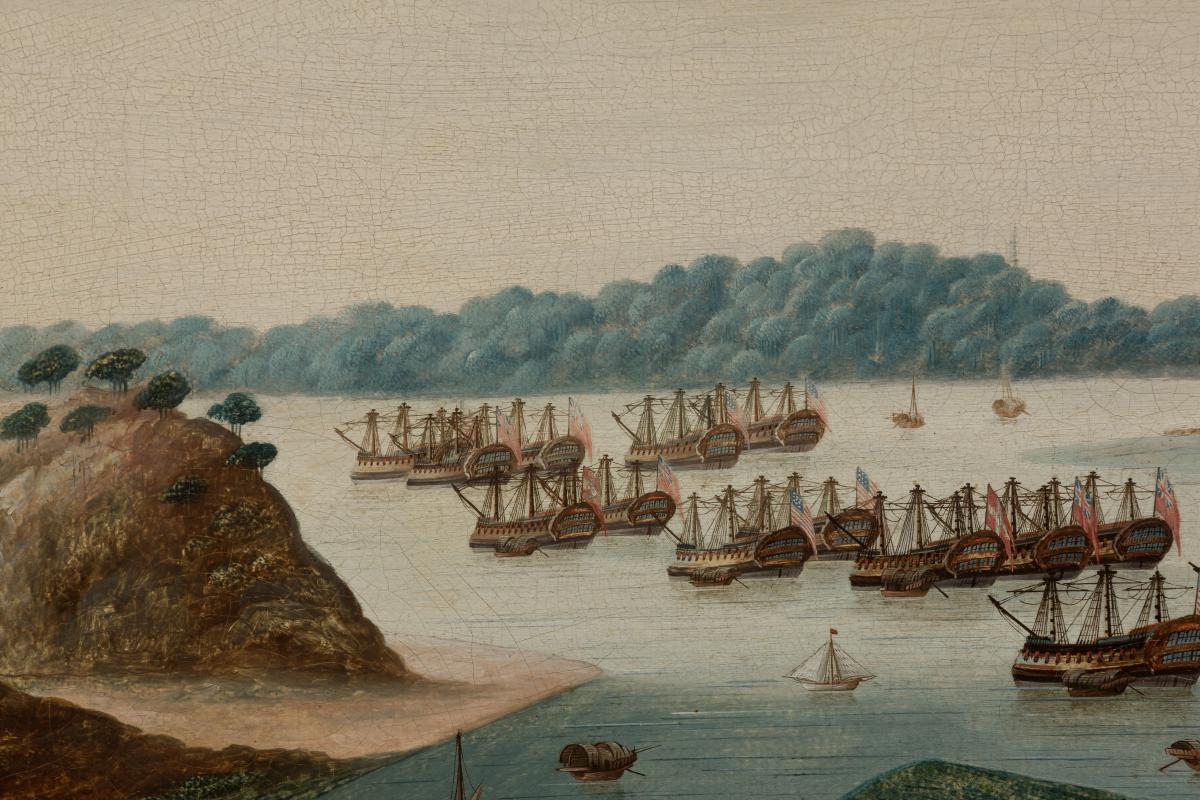
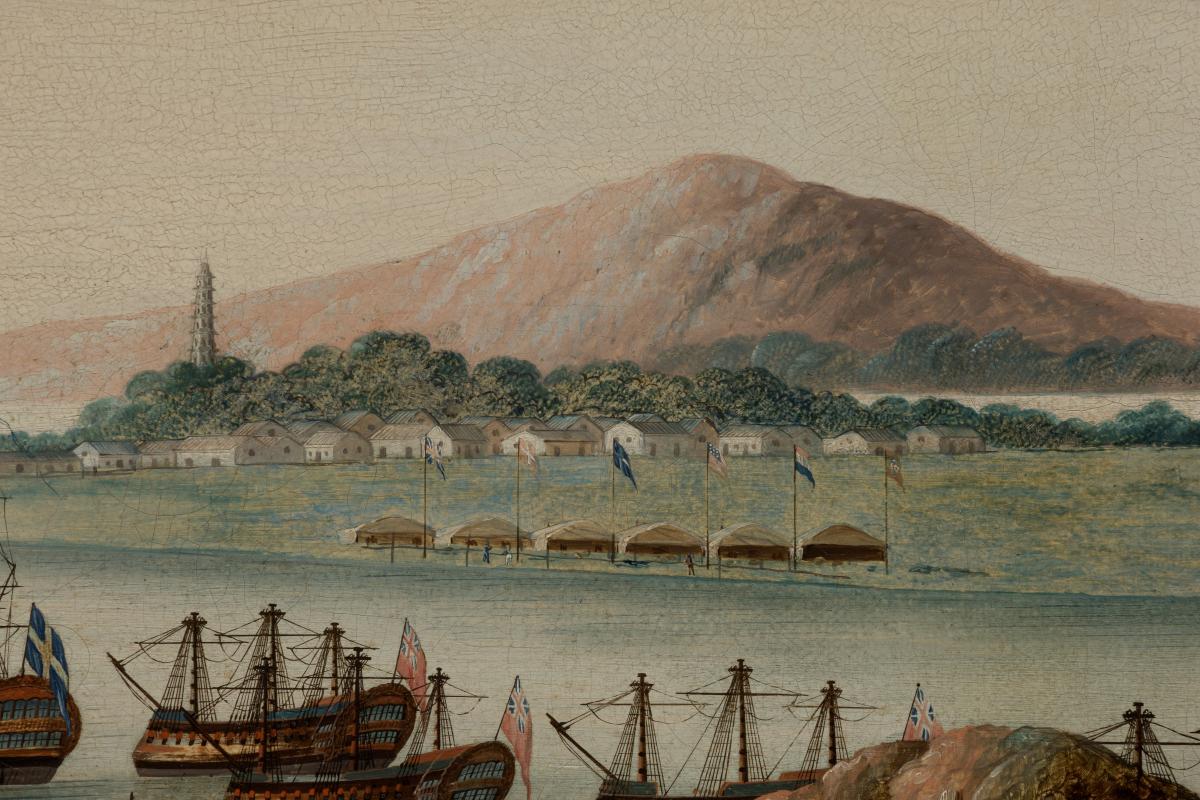
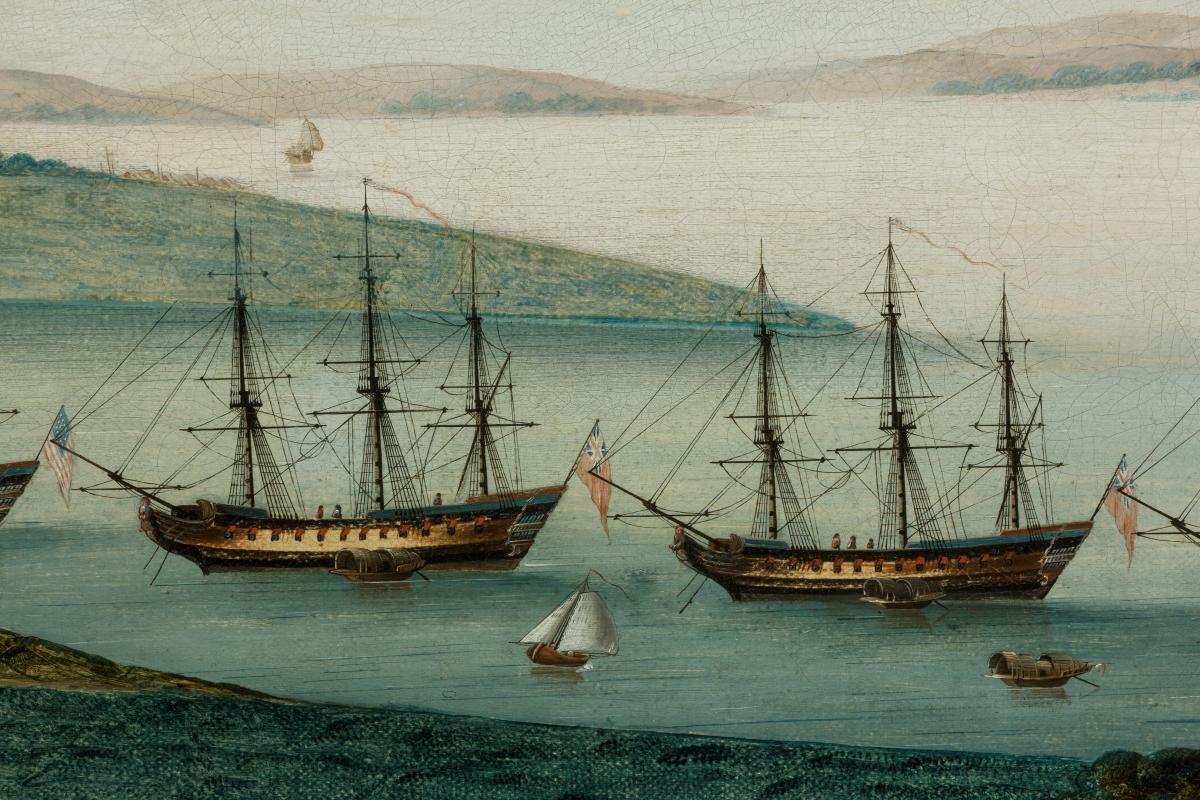
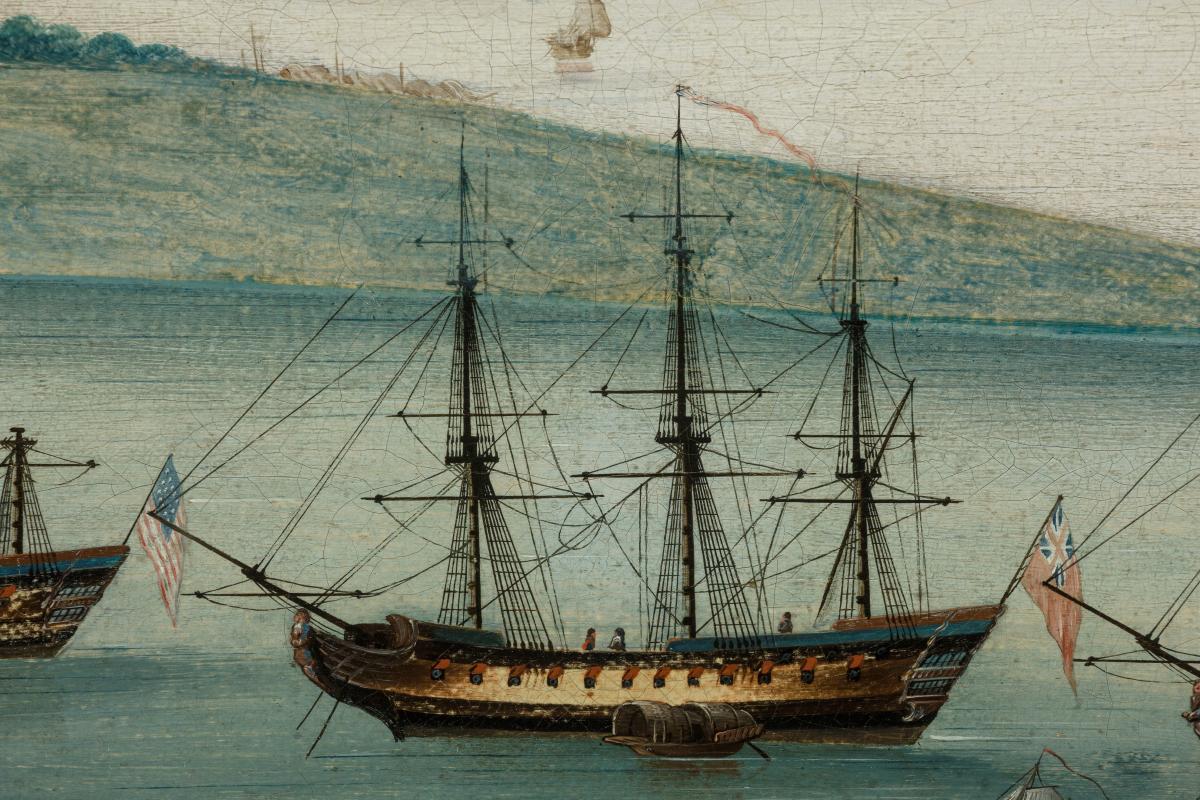
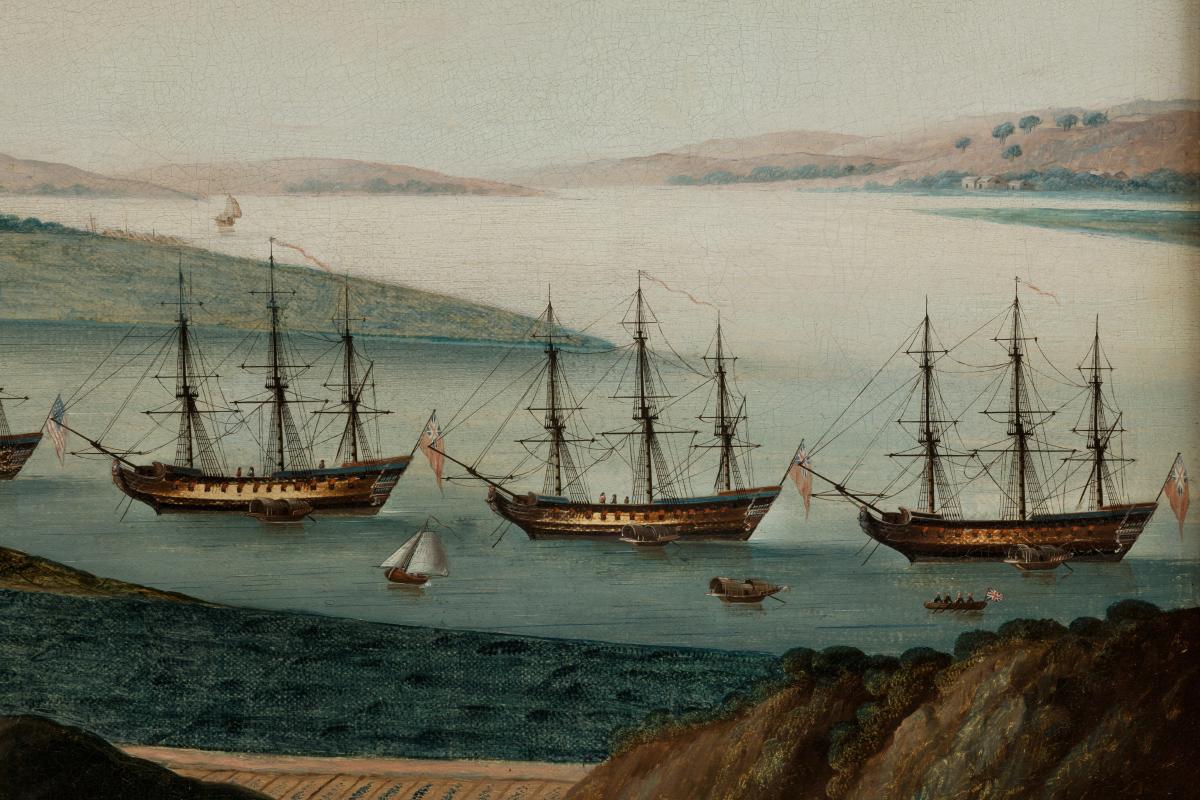
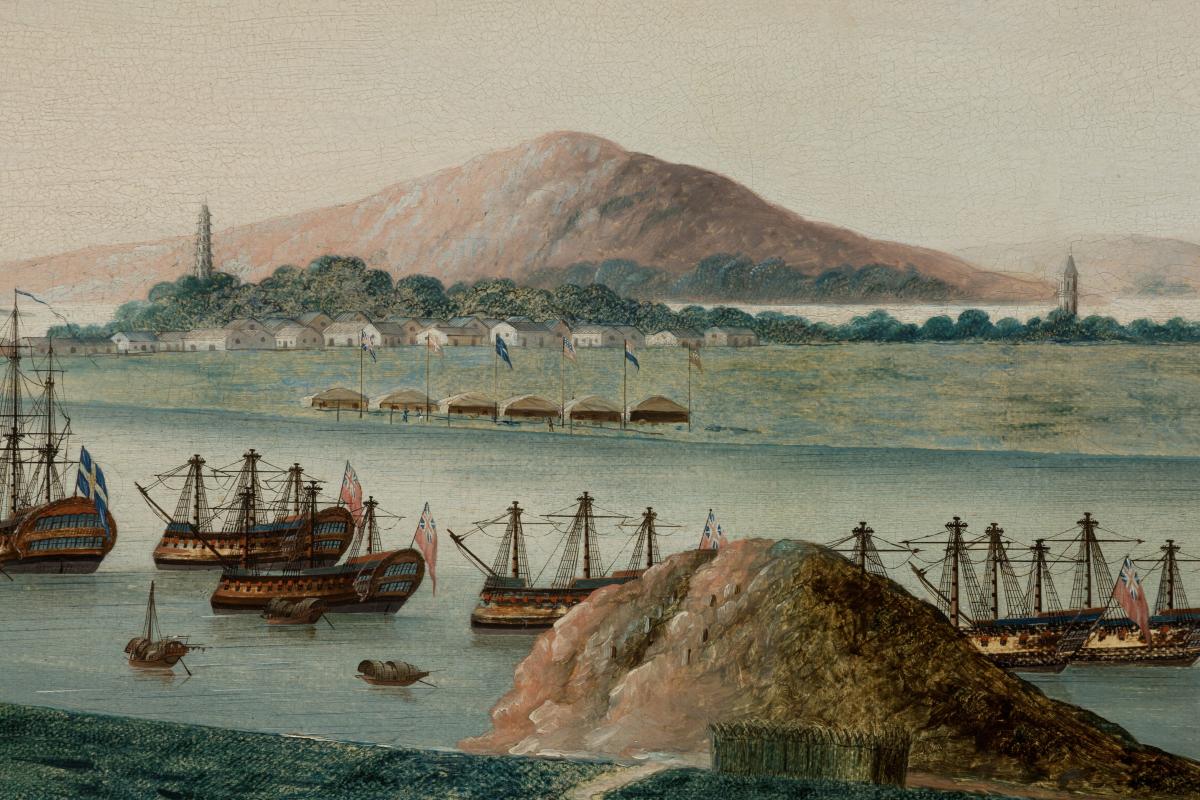
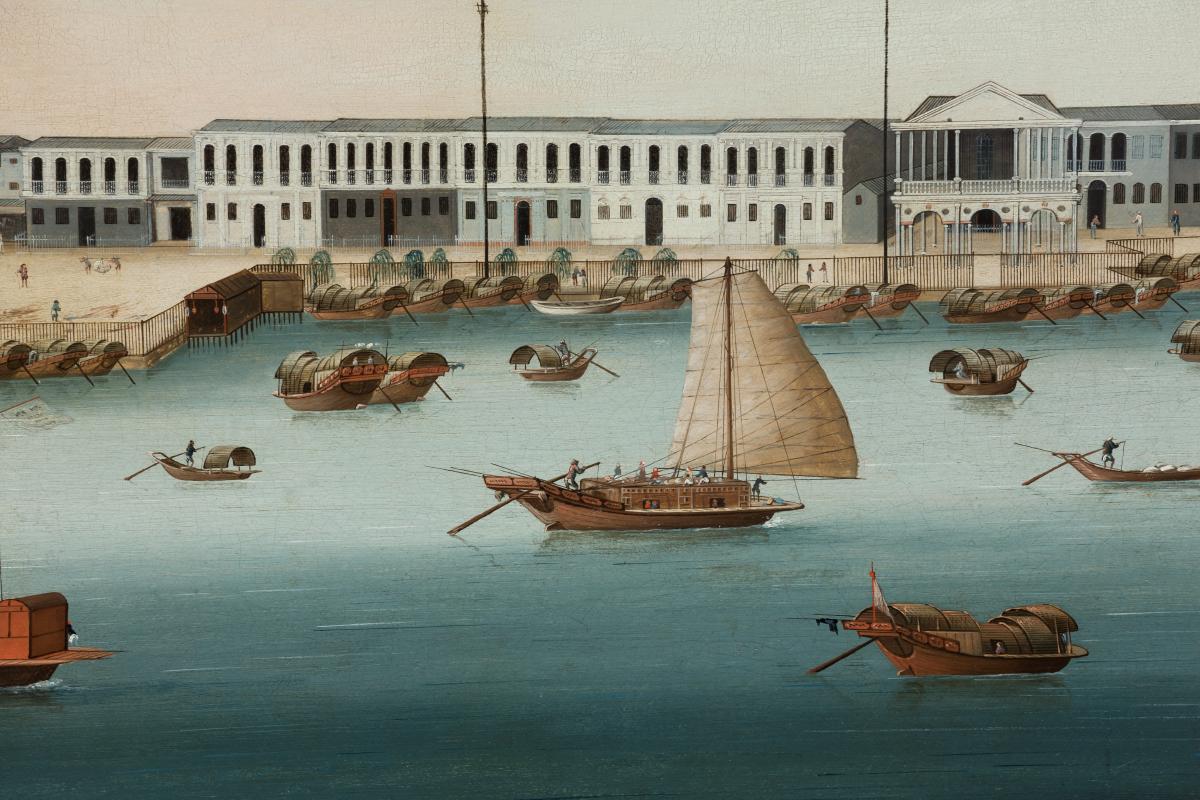
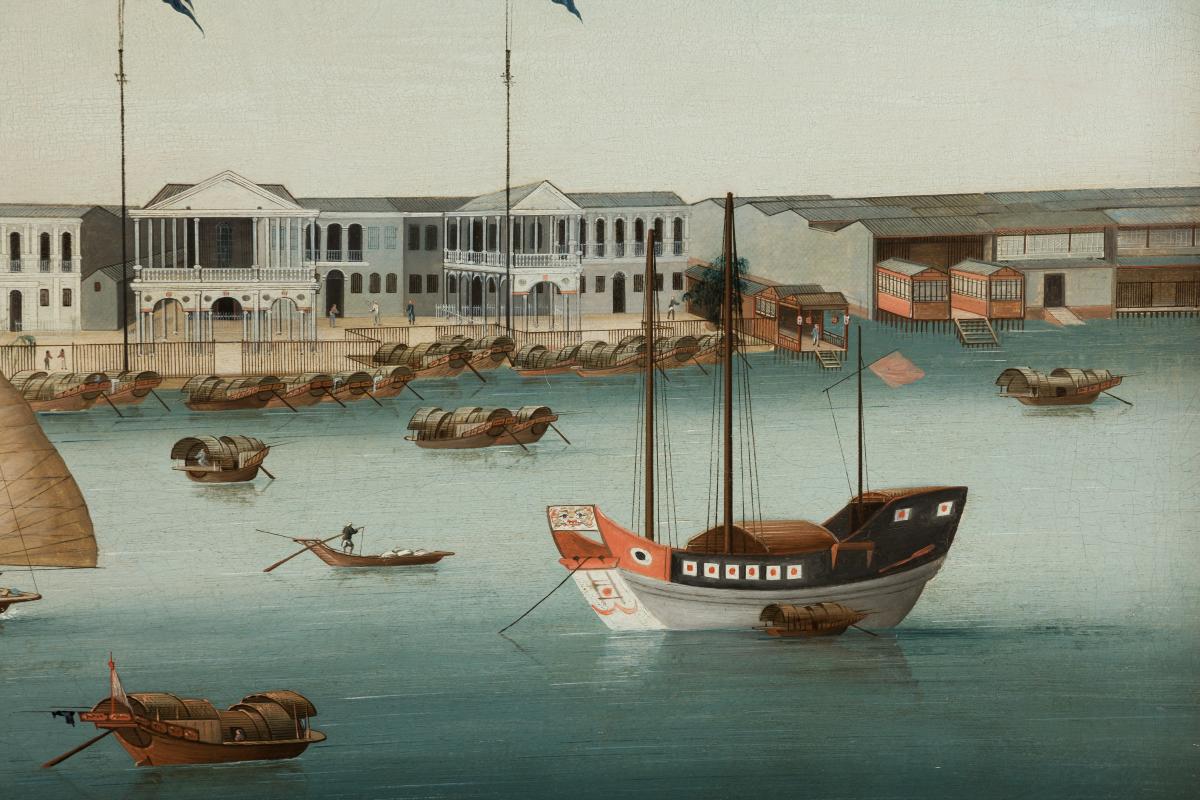
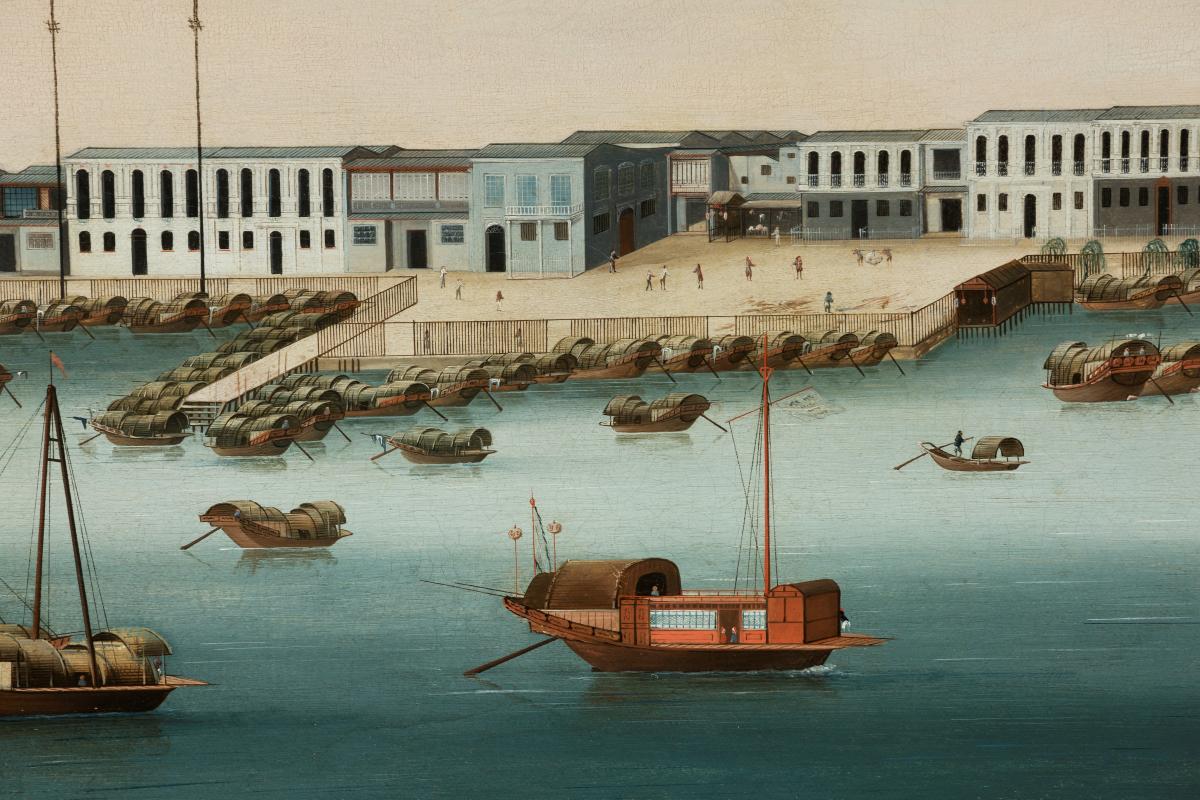
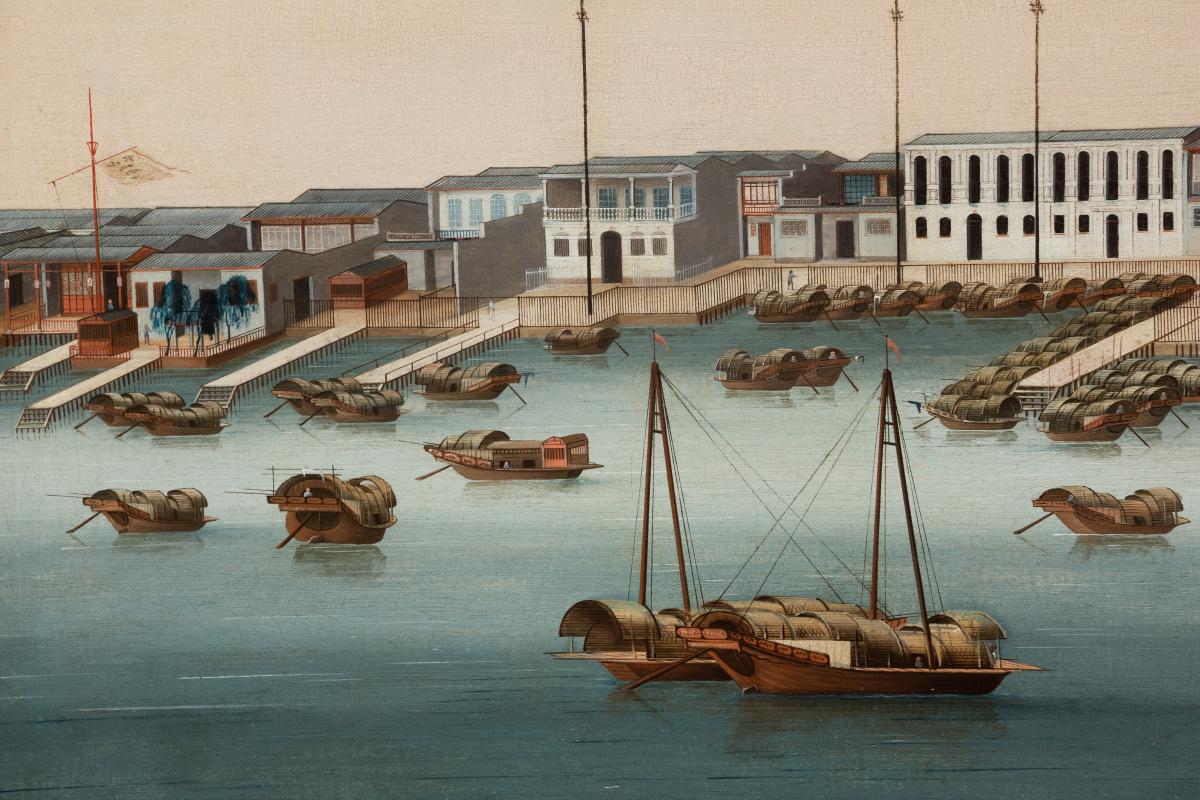
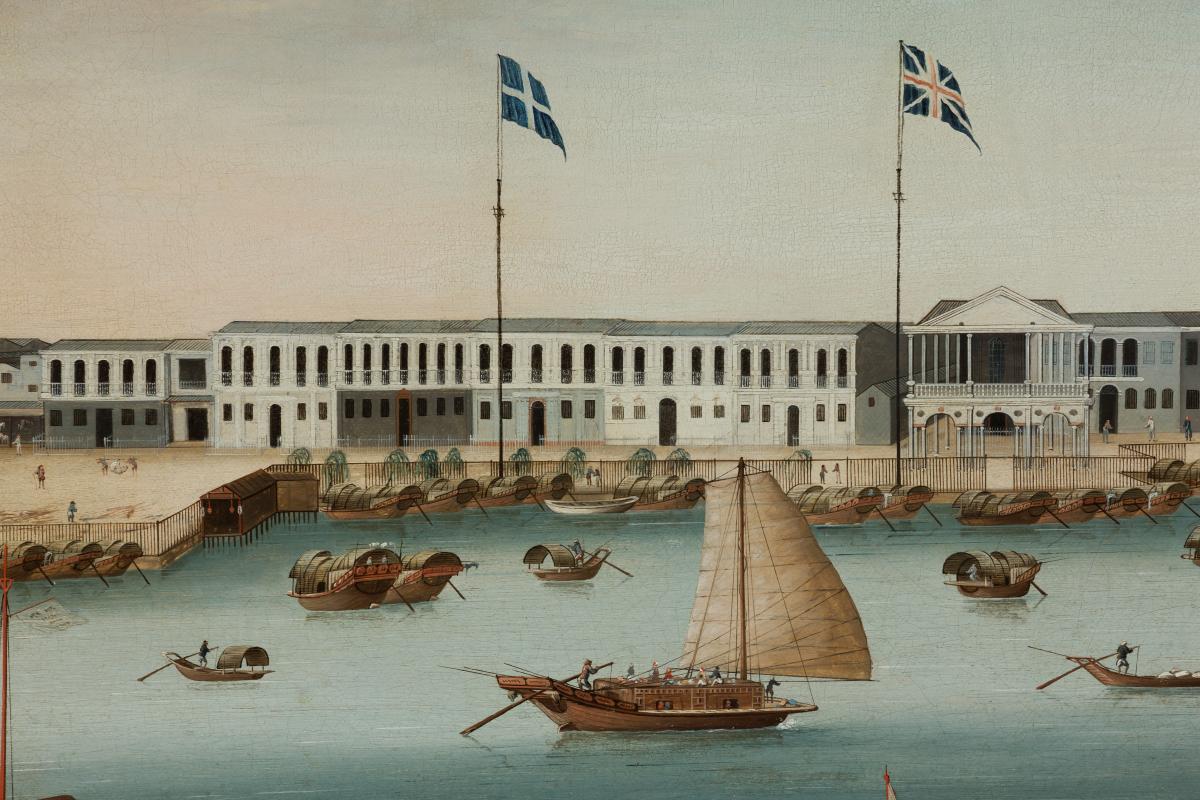
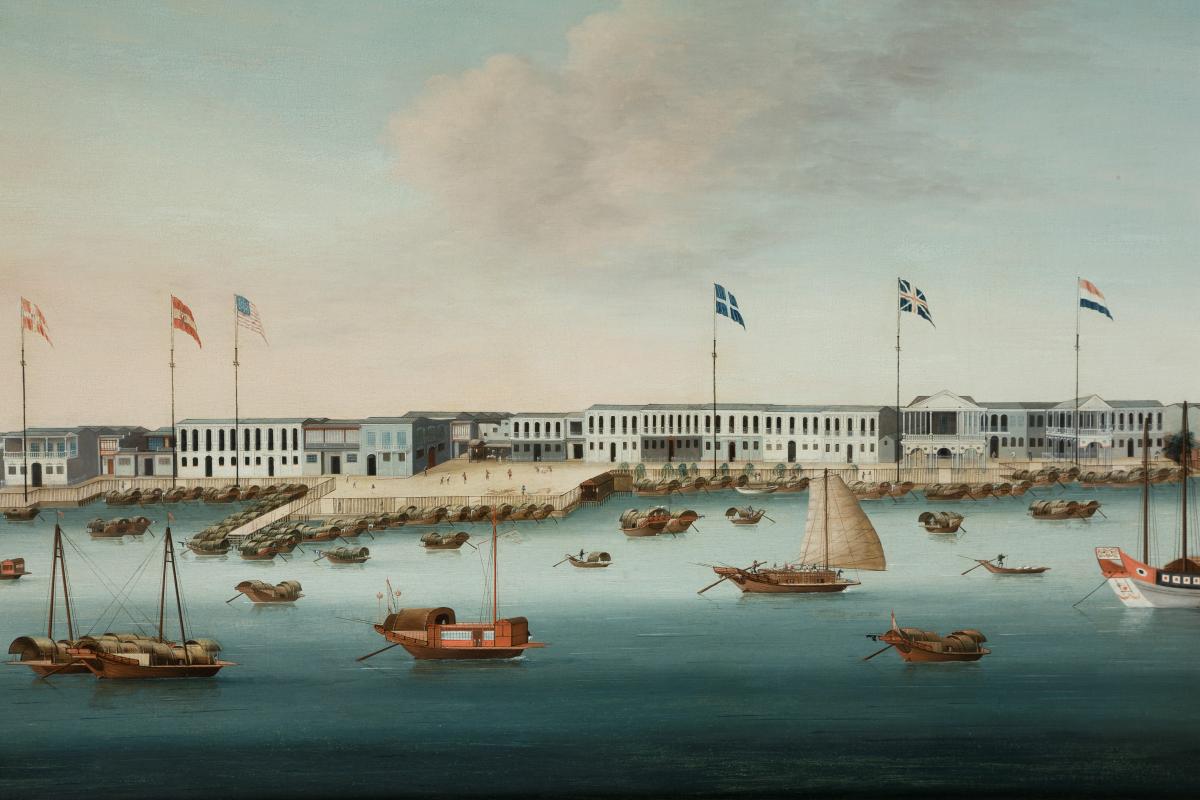
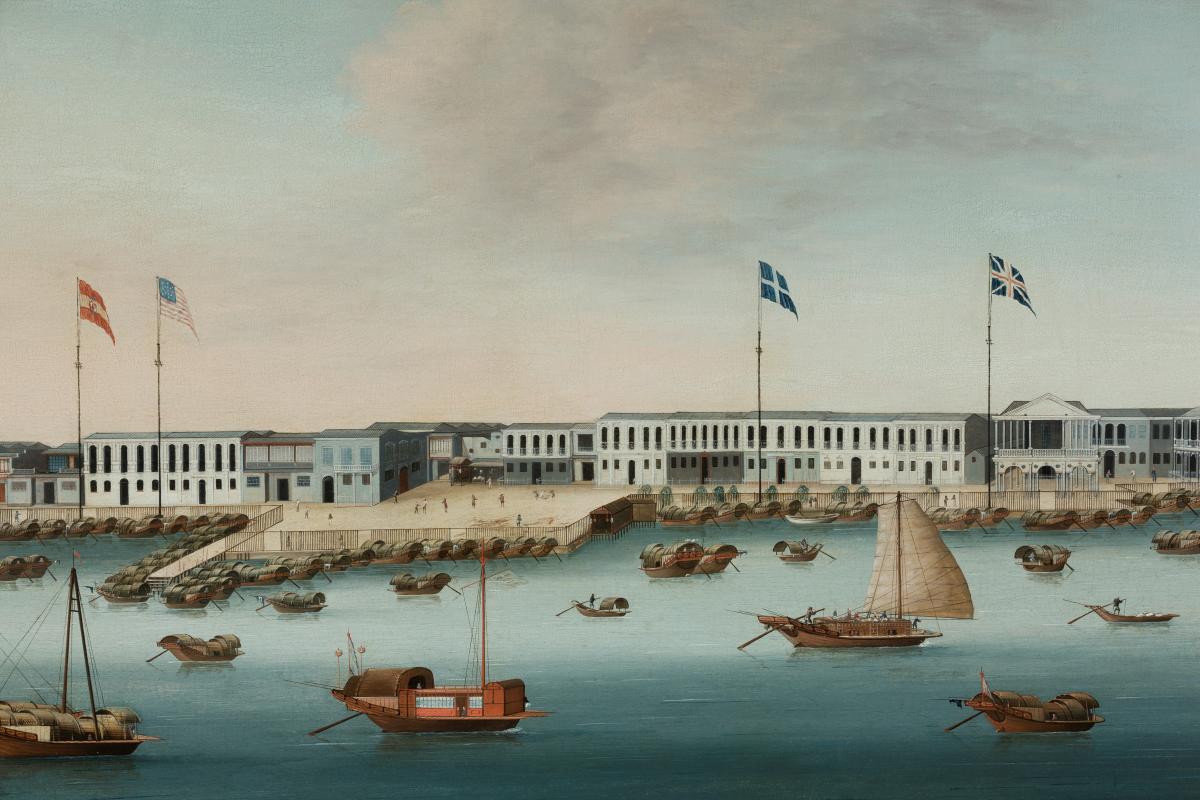
Price on application
This object is eligible for a Certificate of BADA Provenance
The BADA Standard
- Since 1918, BADA has been the leading association for the antiques and fine art trade
- Members are elected for their knowledge, integrity and quality of stock
- Our clients are protected by BADA’s code of conduct
- Our dealers’ membership is reviewed and renewed annually
- Bada.org is a non-profit site: clients deal directly with members and they pay no hidden fees
Unknown Chinese Artist - Pair of Chinese Export Paintings: ‘The Whampoa Anchorage on the Pearl River’ and ‘The Hongs of the Canton Waterfront’.
China, Circa 1800.
Oil on canvas, the original frames restored.
Provenance:
Shipped from Canton with the Swedish East India Company.
Gustaf Adolf Giers (1797-1876) Collection, Sweden.
Thence by descent for four generations at Gullmarsberg mansion in Bohuslän, Sweden,
Sold, Stockholm Auktionswerk, December 2013 where acquired by Thomas Coulborn & Sons.
Private Collection, Rhode Island, USA.
Exhibitions:
Memorial Exhibition of the Swedish East India Company in Gothenburg, 1931.
The Maritime Museum in Gothenburg, Sweden.
Literature:
Compare with: Jan Wirgin, Från Kina till Europa, Östasiatiska Museet, Stockholm 1998, p. 13-26, images 5 and 6.
David Howard & John Ayers, China For The West, London 1978, p. 207.
The view of the Whampoa anchorage is very similar in both technique and pallet to the view illustrated in Patrick Connor, The Hongs of Canton, London 2009, illustrated as plate 1.11 pp. 20-21.
The Whampoa Anchorage on the Pearl River
A view of Whampoa and the Pearl River from the heights of Dane’s Island, showing junks, sampans, tankas and a large fleet of 24 ships with Swedish, Dutch, British, Danish and American flags. The view overlooks the Protestant burial ground, and shows East Indiamen at anchor during the six month trading season, masts lowered, while their captains and supercargoes are upriver at Canton. The traders’ warehouses (‘bankshalls’) are seen on the banks of Whampoa Island beyond the anchorage, each flying its national flag. (Left-right: Great Britain; Denmark; Sweden; United States; the Netherlands; and Spain.) The famous nine-stage pagoda stands just behind the town of Whampoa, and the river to Canton is seen just to its left in the distance.
Whampoa anchorage is 10 miles beyond Bocca Tigris and 10-16 miles from Canton. Here, the merchants hired a Chinese agent or comprador to manage the needs of the ship and crew, and paid the customary taxes and bribes. Since Western sailing ships could not go beyond this area – the water was too shallow –sampans and other small craft ferried goods to Canton. Whampoa, as the intermediate way station between the Western colony of Macau and the Chinese city of Canton, brought Westerners in close contact with the local Chinese population. Here, the two cultures met in an environment of mutual dependence. At each stage of the voyage up the Pearl River, as the foreigners entered more deeply into Chinese territory, they depended more heavily on officially registered Chinese navigators and merchants. Since pirates also infested the waters, Chinese patrol boats helped defend the trading ships.
The Hongs of the Canton Waterfront
The teeming waterfront with a detailed view showing hongs, from the left: the Danish; Spanish; American; Swedish; British; and Dutch flags. Numerous Chinese junks are clustered along the shore.
In his book The Hongs of Canton, Patrick Connor explains in detail the changes in occupation of the waterfront “hongs” which can help to calculate the date of these views. The Americans did not have their own dedicated hong until 1799 when Samuel Snow of Rhode Island arrived as consul in residence. Furthermore the British flag was changed to incorporate the diagonal red of St Patrick of Ireland by the Act of Union of 1800. The old flag (which hangs in the present painting) lacks the red diagonals, but Connor notes that this small adjustment may have taken time to filter through to Chinese artists so it does not necessarily guarantee a pre-1801 date. The hongs shown here were completely destroyed by fire in 1822. They were later rebuilt only to be consumed by fire in 1841 and again in 1856. After 1856, the hongs were never rebuilt.
Dimensions
87 x 132 cmStock number
6087aThe BADA Standard
- Since 1918, BADA has been the leading association for the antiques and fine art trade
- Members are elected for their knowledge, integrity and quality of stock
- Our clients are protected by BADA’s code of conduct
- Our dealers’ membership is reviewed and renewed annually
- Bada.org is a non-profit site: clients deal directly with members and they pay no hidden fees


